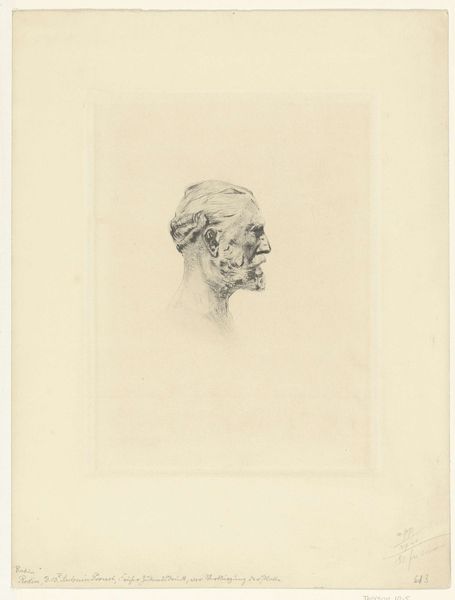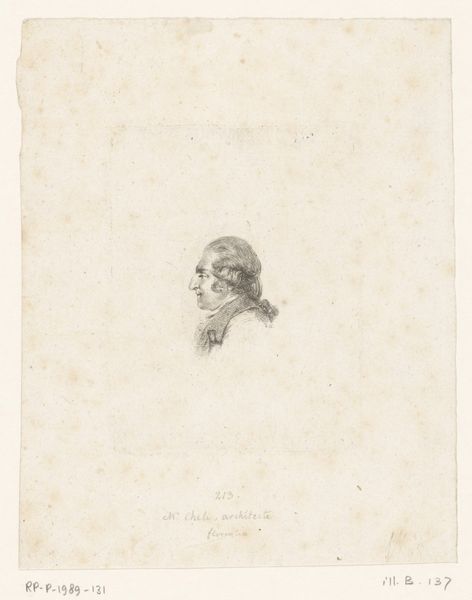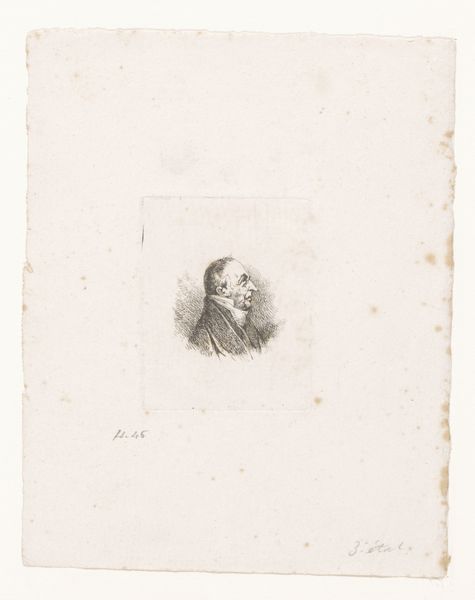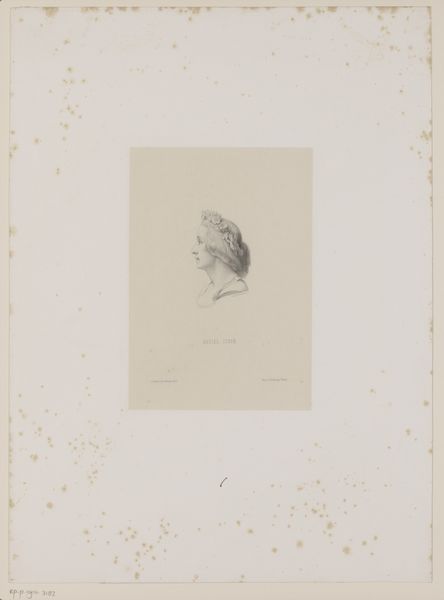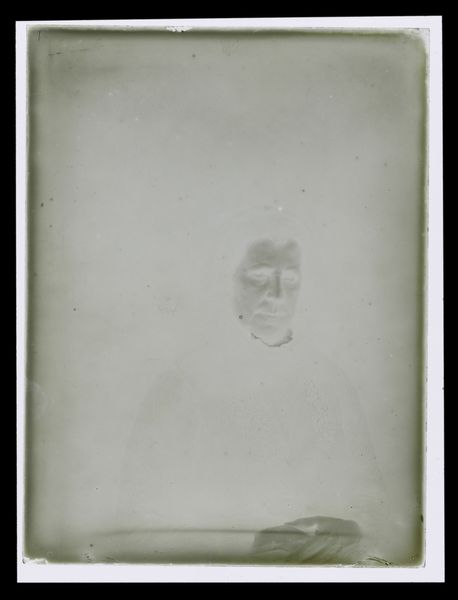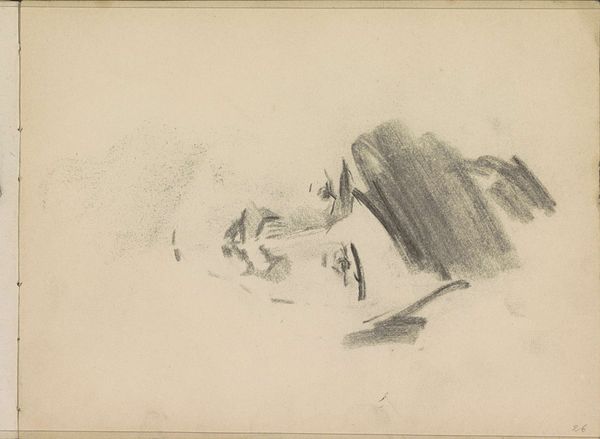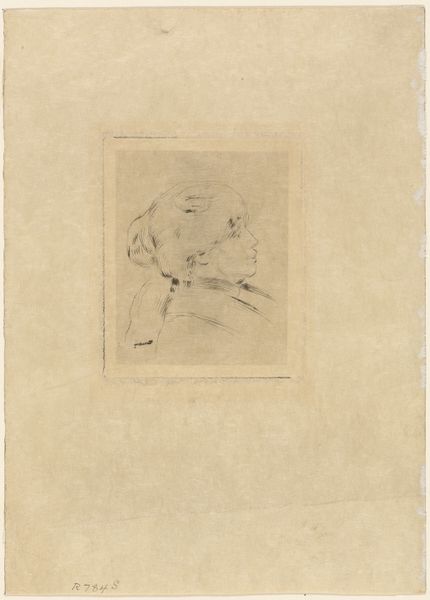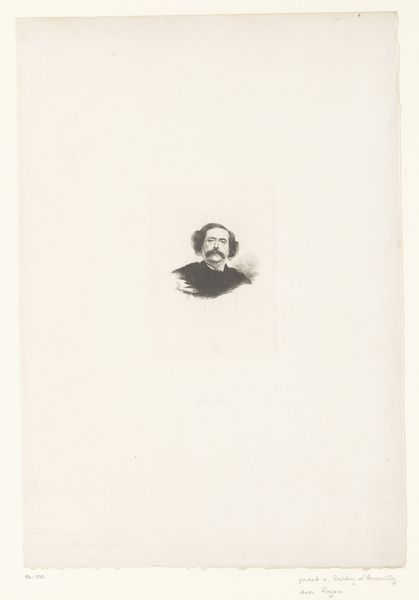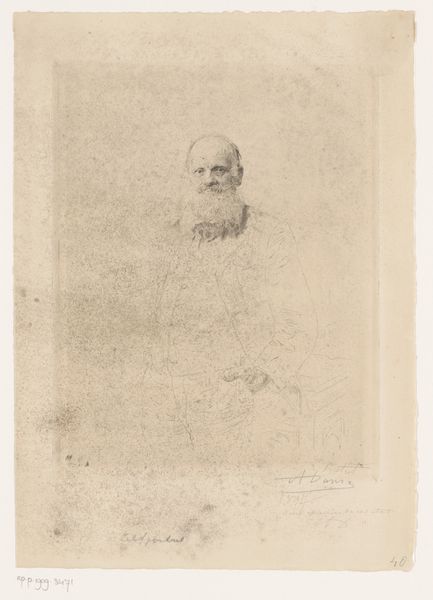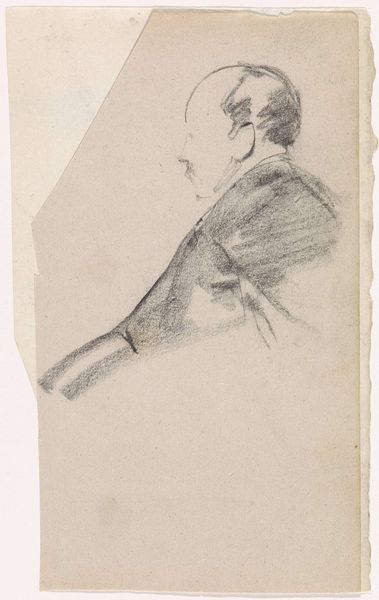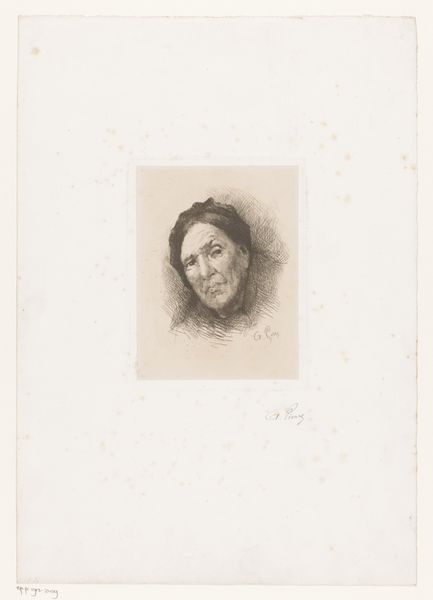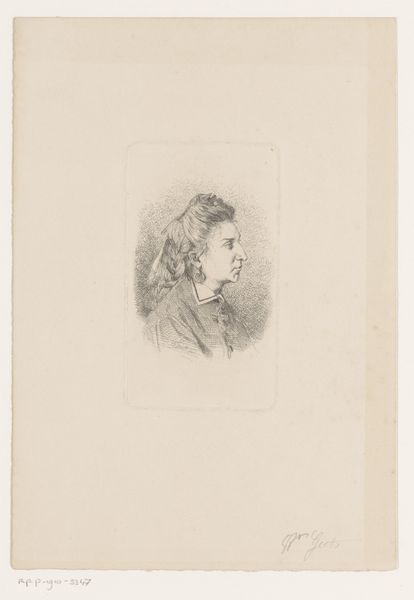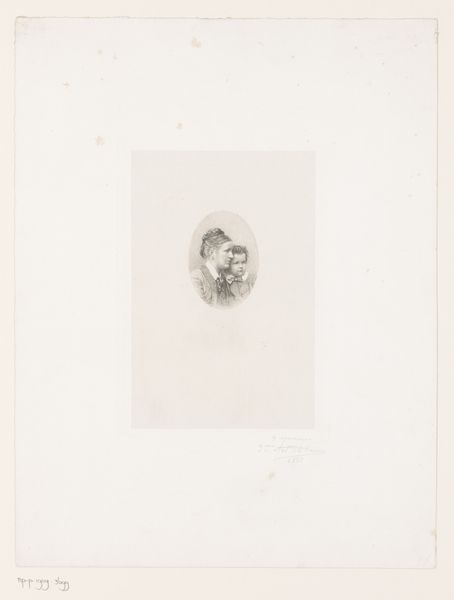
drawing, print, paper
#
portrait
#
drawing
# print
#
paper
#
monochrome
Dimensions: height 275 mm, width 192 mm
Copyright: Rijks Museum: Open Domain
Editor: So, this drawing is titled *Biddende vrouw met rozenkrans in een kerk*—*Praying Woman with Rosary in a Church*—and it's attributed to Fr. van Groeningen, made sometime between 1850 and 1910. It's a monochrome print on paper. It strikes me as quite somber, almost ghostly. What do you see in this piece? Curator: I see a powerful intersection of faith and representation. Consider the historical context: the late 19th century was a time of significant social upheaval and growing secularism. This image of a woman at prayer, particularly with a rosary, positions her as a figure of traditional piety amidst those shifting societal values. Editor: So, the act of prayer becomes almost a statement? Curator: Precisely! The woman’s bowed head and clasped hands, rendered in this delicate print, become symbols of resistance to the encroachment of modernity on traditional faith. It prompts us to think about the role of women in maintaining these spiritual practices. What socioeconomic background do you imagine this woman has, and how might that affect your view of her piety? Editor: I guess I hadn't really considered that. I initially saw her as universally representative of faith, but perhaps that's too simplistic. Could her class, or lack of it, be a part of why she's drawn to prayer? Curator: Exactly! Consider how access to power structures impacts religious devotion. This work subtly hints at a much larger, and continuing, social narrative. We have to ask who has historically turned to faith in times of hardship or marginalization. Editor: That's given me a lot to think about. I was so focused on the aesthetic of the piece that I missed those layers completely! Curator: Art invites these discussions, these questionings of the status quo and power dynamics. We can appreciate the aesthetic quality and appreciate it at the same time that we explore its potential social implications.
Comments
No comments
Be the first to comment and join the conversation on the ultimate creative platform.
